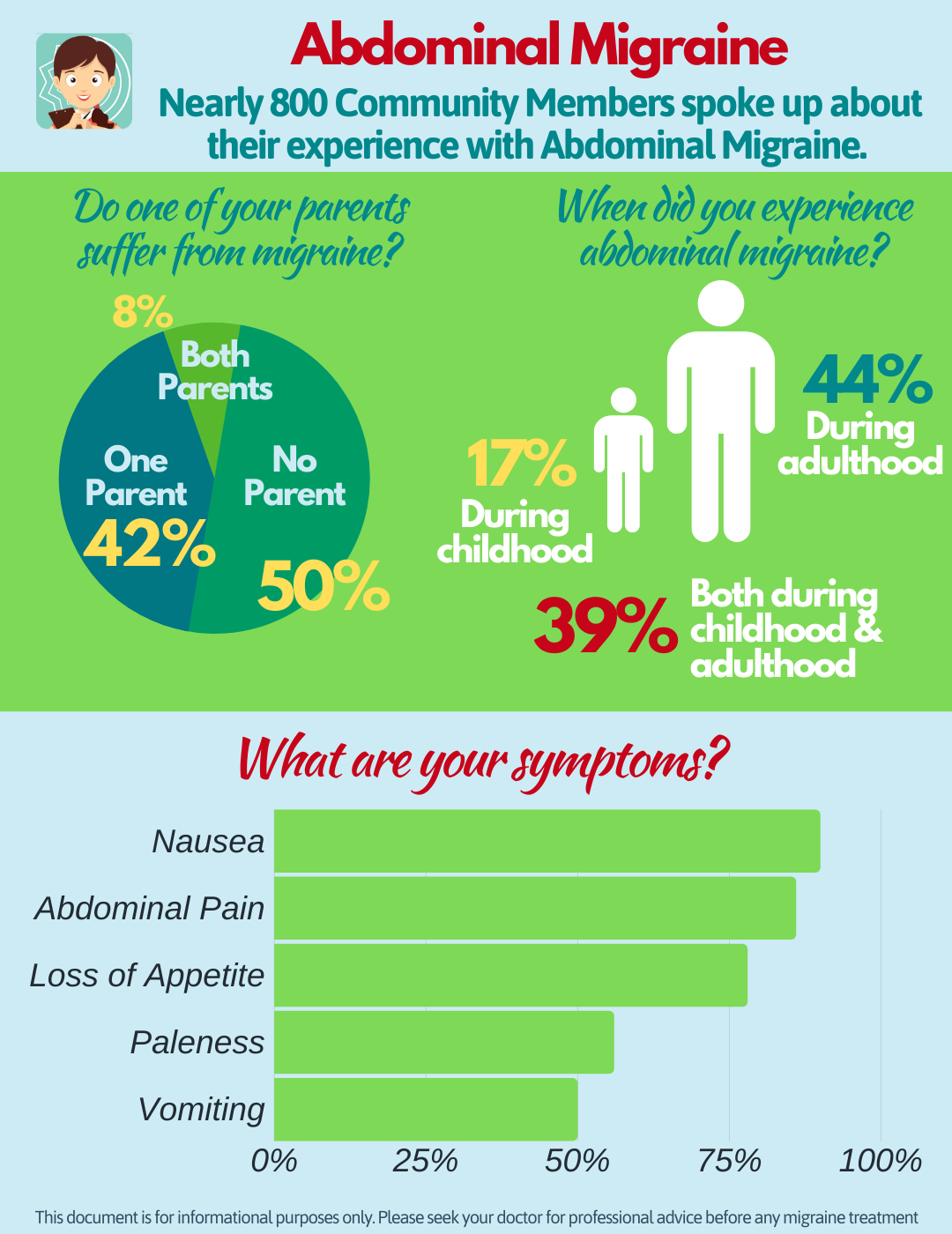Abdominal Migraine - how much do you know? Part 1
Have you ever heard about abdominal migraines?
An abdominal migraine is a form of migraine mainly occurring in children, but it can also be seen in adults. Thus, among Migraine Buddy users, 56% of them experienced abdominal migraines during their childhood and 39% of them still suffer from these attacks in adulthood.
Historically, abdominal migraine has first been included under the Rome II classification of FGID (Functional Gastrointestinal Disorders) with well-defined guidelines. A few years later, the International Headache Society recognized Abdominal Migraine as a pediatric migraine equivalent and included it under the ICHD II classification. Currently, Abdominal Migraine is also registered in the ICHD III classification under “episodic syndromes that may be associated with migraine”.
The current attack of abdominal pain recognizes abdominal migraine.
The most common symptom registered by Migraine Buddy’s users is nausea (for 89% of the patients). But the abdominal migraine is also associated with loss of appetite, paleness, vomiting or vasomotor symptoms. It is often sudden and hits without warning signs.
As well as migraine headache, abdominal migraine may be difficult to diagnose, especially for young children. The ICHD classification precisely defines abdominal migraine as an idiopathic cause of moderate to severe recurrent abdominal, dull or just sore, pain that is midline, periumbilical, or poorly localized. When not treated successfully or without treatment, attacks last between 2 to 72 hours, leaving the patient free of symptoms between two episodes.
To fulfil the diagnosis, the patient has to present at least two of the following associated symptoms: anorexia, nausea, vomiting, pallor among at least five pain attacks. Dark shadow under children’s eyes can also be seen. What is noticeable is that headaches do not occur during these episodes. However, there is a link between these episodic attacks and migraine headaches.
It has been discovered that children having family members suffering from migraines are more likely to have this disorder. According to the Migraine Buddy community, 42% of users have one parent suffering from migraines, and 8% have both parents that are migraineurs. What are more, abdominal migraines occurring during childhood often convert into migraine headaches in adulthood?
We already knew that genes might influence the likelihood to develop migraine headaches, but the conclusion seems to be the same for abdominal migraines. Besides, Abdominal Migraine often happens as a reaction to the same triggers as migraine headaches. Food such as chocolate, processed meats with nitrites, food with monosodium glutamate (MSG), stress, travel, exercise, flickering lights, prolonged fasting, and alteration of sleep the pattern might trigger abdominal migraines.

